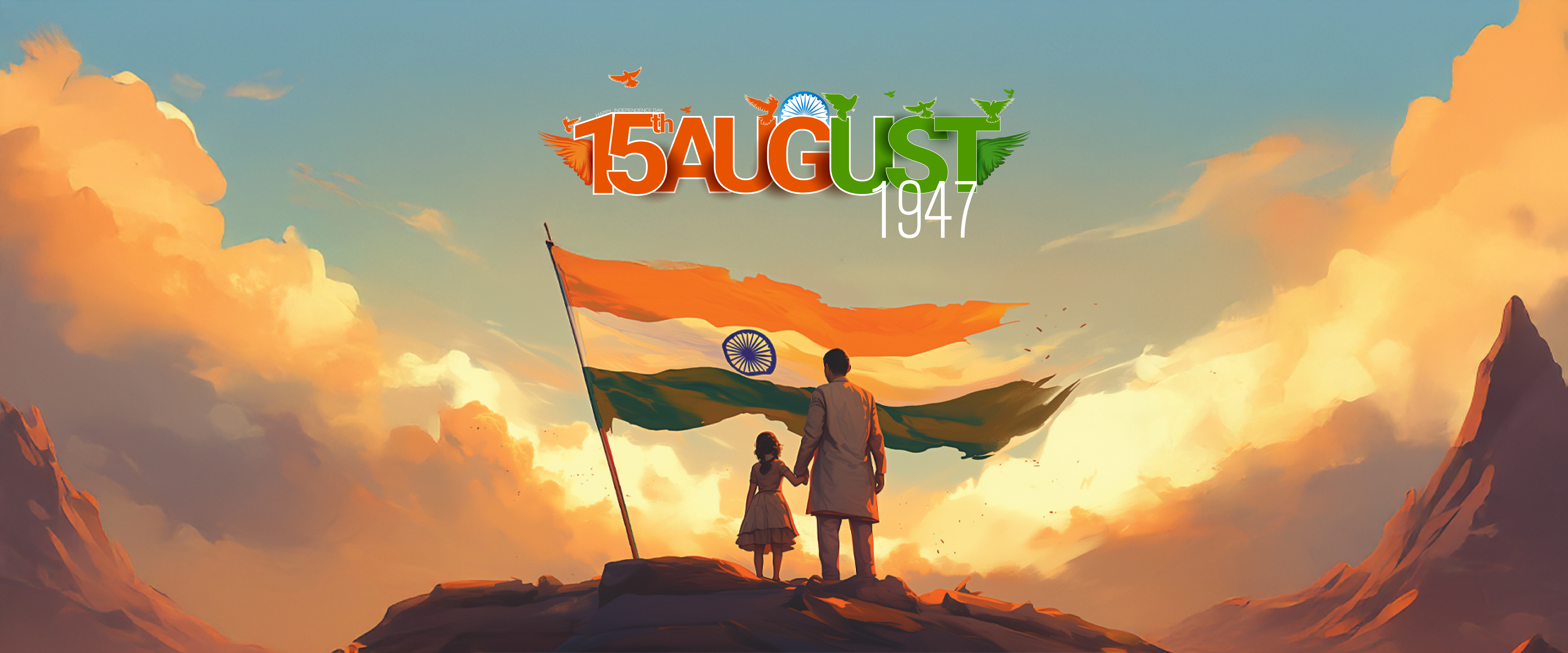
Independence Day – Tales You Don't Know
Each year on August 15, India commemorates its hard earned freedom in the form of flag hoisting functions, patriotic melodies, cultural shows, nationalistic waves that goes across India. But even though we are all familiar with the meaning of this historical day when India was liberated from British rule in 1947, there are numerous truths and tales about Independence day which are buried deep in the historical line.
This year, instead of considering the usual things, we will consider the lesser known story of freedom in India that makes this day even more interesting.
India was not completely independent on the 15th of August 1947
Yes, we were politically free of the British colonial rule now on this day, nonetheless, India was not a full-fledged sovereign republic yet. We lacked a fixed constitution, a President and a system of national elections. Even after this we continued to have King George VI as a nominal head of state until the Constitution of India took place on January 26, 1950. That is why Republic Day is observed independently-to observe the real birth of the Indian Republic.
Why August 15? The British selected it
You may think that it was India who decided to observe August 15, but all through, it was the last British Viceroy to India, Lord Louis Mountbatten, who picked the date. Why? August 15, 1945 was the date on which Japan had surrendered against the Allied Forces in World War II, and it was a big triumph to the British. August 15, the day Mountbatten desired to coincide with the Indian Independence Day was a symbolic date.
The early First National Flag was a lot Different
The flag we adore the tricolor was not the only precursor of the national flag of India. The unofficial flag was first raised in 1906 in Calcutta (now Kolkata). It included three horizontal stripes green, yellow and red with symbols such as the sun, crescent moon, and Vande Mataram embellished on it.
The present flag, including saffron, white, green with Ashoka Chakra at the center, was adopted officially on July 22, 1947, a few weeks before Independence.
Pakistan was being celebrated prior to India
This is one thing that most people do not know; Pakistan received its independence a day earlier than India, i.e., August 14, 1947. Despite the fact that the two countries were accorded freedom at midnight on August 14 and 15, Lord Mountbatten presented the ceremony in Karachi on the 14 th (first) before flying to Delhi to preside at the Indian independence.
In Britain, the Indian Independence Act was Enacted
Actual independence of India was not declared in India. The act in the British Parliament was the Indian Independence Act 1947 and royal assent was granted to it on July 18, 1947. This Act divided British India into two dominions which were called India and Pakistan and were given complete legislative sovereignty.
A lot of the Princely states did not immediately merge with India
By the time India got independence, there were more than 560 princely states. Not all states acceded to join India as many states did voluntarily, but important states such as Hyderabad, Junagadh and Jammu and Kashmir did not necessarily join India immediately. The diplomatic process and at times armed means were needed to dissolve their hanging in the years that have passed since 1947 to be able to integrate them into India in full.
The speech of Jawaharlal Nehru was not live on August 15
The famous speech delivered by Nehru on the eve of the independence of India called the Tryst with Destiny is one of the most well known speeches in Indian history. However, surprisingly, it was presented on August 14 night before midnight. And at that time All India Radio was not capable of broadcasting the speech live in a broadcasting manner throughout the nation. Few in Delhi were present at the time and recordings were played at a later time.
There was No National Anthem in India during Independence Day
Although the song by Rabindranath Tagore which is the national anthem of India (Jana Gana Mana) was written in the year 1911 it was not adopted as the national song of India until 1950. August 15, 1947 was the day when national anthem was not declared national anthem or national song, however, Vande Mataram was very famous in the time of the independence movement.
Final Notes: Strug acceptance and a Future of Hope
Independence Day is not only about a celebration; it is a live memory of struggle, cohesion, and the nation. It is these little-known facts which remind us that the journey to freedom was not straightforward and there was not one single path towards freedom. Millions of silent heroes, highly complicated negotiations, and eventualities of world history formed it.
This year, as we salute to another year of independence, apart from saluting the flag, we need to also raise awareness- such that when we talk about our freedom, the stories are not dead, but covered in details and are as inspiring as ever.
Jai Hind





